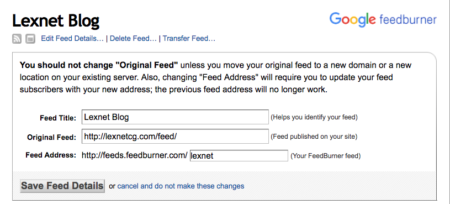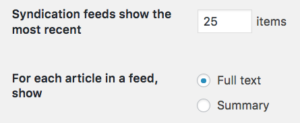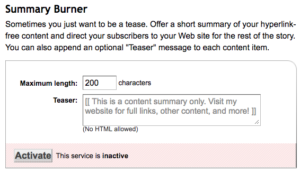FeedBurner is a web feed tool that was launched in 2004. The best know web feed format is RSS (Really Simple Syndication).

FeedBurner was acquired by Google in June of 2007.
Several years later, Google’s inattention to FeedBurner made it clear that FeedBurner did not have any direct or even indirect monetization potential.
Because of Google’s lack of attention to the app, bloggers began to predict its demise.
Yet FeedBurner continues to live, albeit with minimal caring and feeding.
What Does FeedBurner Do?
Feedburner enhances a basic RSS feed by making it more readable.
It allows for managing email subscriptions to the feed. There are other types of subscribers to the feed, including bots.
As with many Google applications, Feeds can be created and configured using a consumer Gmail account or an organizational Google Workspace account. Feeds can be easily transferred from one Google account to another.

This is what the WordPress feed for the blog you’re reading looks like. In Chrome, the feed is displayed in XML format. Other browsers, such as Firefox, render a format more easily readable by humans.
This is what the corresponding FeedBurner feed looks like.
A Feed can show a summary of each blog post or it can display all blog posts in their entirety. WordPress users can set the latter by selecting Full Text under Reading Settings in WordPress…

…and then leaving FeedBurner Summary Burner inactive.

Two of Google’s blogs that use FeedBurner are Google Workspace Updates Blog and Google Cloud Platform Blog.
Why Is FeedBurner Still Alive?
Google would have alienated many businesses by pulling the plug on the app.
FeedBurner isn’t just a web feed tool for blogs. It’s a web feed tool for podcasts. Podcasting has soared in popularity in recent years.
The popular Freakonomics show is an example of a podcast that uses the app.
The fact that several Google blogs are using FeedBurner may be an indicator that it will remain alive — at least for a time.

